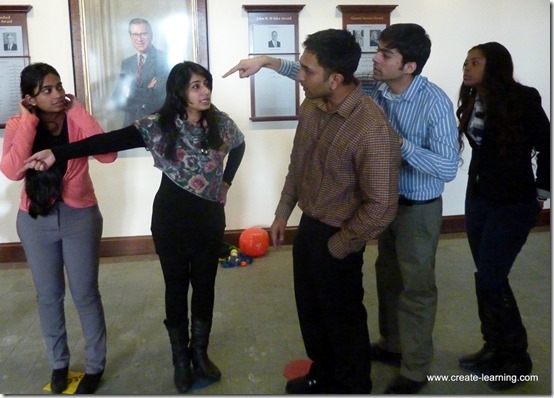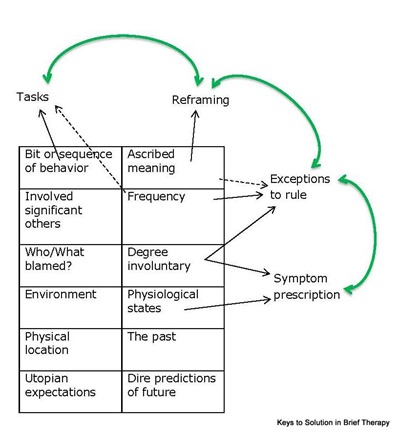In Transforming Complaints Toward Solutions & Understanding Complaints May Point to Solutions, I introduced 12 General Areas of complaints & 10 Skeleton Keys that may open the door to solutions from the complaints.
10 Skeleton Keys
Imagine that you have a key ring of 10 Skeleton Keys. As you hear the complaint a co-discovery process of ‘what does better looks like’ happens. From this Skeleton Key ring you are able to hand the best Skeleton Key to the person.
The Skelton Keys are:
- Direct Task Assignment;
- Reframing the Situation;
- Exceptions to Rule;
- Symptom Prescription;
- Past Successes;
- New Expectations;
- Minimal Change;
- New Location;
- When will guilt be resolved?;
- What difference will it make to them?
Each Skelton Key may work best depending on how the person frames the complaint.
“…the interventions are designed to set up situations in which the [person / team] spontaneously behaves differently. They are based on pattern data the [person / team] offers, and presented in terms consistent with their world view…. Although he instructs the client to perform a task, the [coach / consultant / facilitator] has no more idea than the [person / team] what specific spontaneous behavior they may develop… The immediate goal is to set up a task that puts them in a situation in which different behavior is a must.” – Steve de Shazer
Skeleton Key – Symptom Prescription
What does the workplace complaint look like?
The degree to which the complaint is involuntary
- Example in earlier article… She brings out the worst in me, I cannot control or change it. It is just how we are.
The bodily or feeling state involved
- In front of executive management team I feel like I don’t belong and cannot find the right words to say or even when to speak up. When I am about to say something my stomach tightens and my head pounds. The meetings move so fast that I cannot even figure out what to say. After the meetings I am mad at myself for not talking. For me better would be that I speak clearly and share my opinion with the management team. This will happen while I sit up straight in my chair and use a strong, firm, tone.
What would the Symptom Prescription – Skelton Key – Look Like?
Symptom Prescription: Asking the person / team to purposefully do more of the problem / complaint. This is done in the belief that by doing more of the complaint, purposefully, the person may do or notice something useful or break the pattern they feel they are stuck in.
Do more of the complaint to recognize the solution…
- Part 1: It is impressive how you manage to accomplish the work with this hijacking of your action & still return to a calm state. Here is something kind of weird that I would like you to try. When you leave the situation, instead of trying to calm yourself – work to make yourself angrier to the point of exhaustion.
- Part 2: When you are exhausted, take notes on what happened – how you reacted – and what benefit you received from this action.
- Part 3: Next time you feel this way compare the exhausted notes to the way you are acting at that time.
Do less of the solution to identify when you can best apply what works…
- You want to speak more confidently here is something that might work. Talk less. While you are talking less pay attention to who is talking more, what they are talking about, how they interject into a conversation, how people react to their talking, and what impresses you about their actions. Purposely do less of what you want to have happen… Take note of how this benefits you – and how others react towards this change.
- Here is a Leadership Coaching Success Story. Using Symptom Prescription to enable a manager to be seen as his fully competent self.
All Skeleton Keys are meant to find Cooperation and be close enough to create progress. The symptom prescription does not work that’s OK. Spend time talking and try something else.
What do you think?
In my opinion this one is tough … how might symptom prescription be useful? If you try doing more of the complaint, how will you compare the change in behavior with the complaint?



